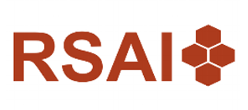Food security at the crossroads of regional inequalities in Mexico
The purpose of this paper is to analyze the regional dimensions of food security, seen as a structural problem of development in Mexico during the period 2000-2020. The hypothesis is that the commercial opening implemented in the country under a framework of asymmetric economic development, widened its socio-territorial inequalities and with it the food insecurity gap. To investigate this phenomenon, we applied the Principal Component Analysis (PCA) and Dalenius-Hodges stratification methods, with which we built a measurement index at municipal and regional scales. The results obtained indicate that, seen both by number of regions and population proportion, more than half of Mexicans face some degree of food insecurity. Reversing this situation implies deploying a food policy aimed at recovering self-sufficiency in the production of basic grains and guaranteeing access to food, mainly by improving income among the population located in the ranges of poverty and extreme poverty.
Check other articles from the issue Issue 53 – Summer 2022 or from other issues.


